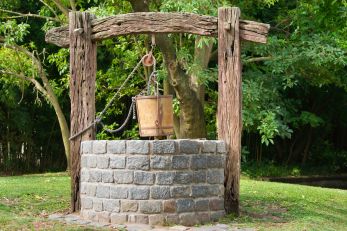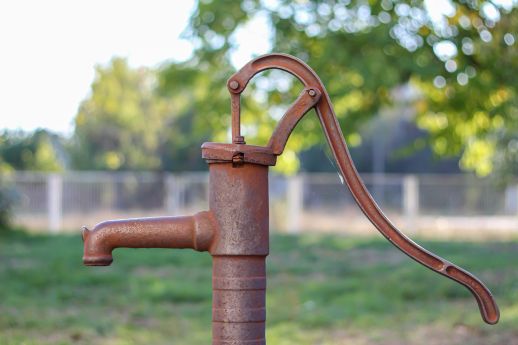What are the causes of low well water pressure?
The main cause of low well water pressure is a clogged well pump. Sometimes a clogged well pump can be caused by old leaves or debris that have fallen into the well, but more often than not it is caused by animal waste or something like a broken pipe. Other causes of low water pressure are low water flow, such as if you have a low head or poorly placed well piping.
Low water flow can also be caused by an issue with your Well Pump’s installation or the internal plumbing in your home. Another possible cause is if your well pump does not have enough power to lift enough water out of the ground for it to get to your house’s main piping.
If this is the case, you may need to replace your current Well Pump with one that has more power and a longer shaft length. You can find both pumps and parts on eBay as needed to help get you up and running again in no time at all.
What are the tools to measure well water pressure?
A Pressure Gauge: Pressure gauges are an essential tool for measuring water pressure. It’s recommended that you measure the water pressure using a digital or analog gauge.
They will have different types of gauges depending on the type of pump you have. Digital gauges use electronics to measure and store information about the pressure in your well and can store up to 12 readings, so it will be able to record water pressure information for many years without any problems at all.
Analog gauges use physical sensors inside them to measure pressure and they can only hold up to three readings, so you’ll need to make sure you take your measurements frequently in order to get a good reading every time. Water Flow Meters: Another important tool is a flow meter.
This is used to measure how much water is flowing out of your well and into your home’s plumbing system, so if you notice that it isn’t as high as usual or if the water level drops too quickly, this can be an indicator that there might be an issue with your Well Pump or piping system. If this is the case, then this will need to be fixed right away before the problem becomes worse than it already is.

How to measure low well water pressure?
If you are not sure if your well water pressure is correct, or if you just want to double check the pressure before you go out and buy a new pump, here’s how you can do it: Connect a Pressure Gauge. You’ll need a gauge that measures between 60 and 100 psi. There are several different kinds of gauges on the market and the best ones will have a test button to help you test the system before installing it.
Some gauges will also allow you to plug in an electrical circuit so that they will beep when they detect an issue with the system. You’ll need a gauge that measures between 60 and 100 psi. There are several different kinds of gauges on the market and the best ones will have a test button to help you test the system before installing it.
Some gauges will also allow you to plug in an electrical circuit so that they will beep when they detect an issue with the system. Take Your Measurements: Before starting your well pump, take your measurements using your digital or analog meter. Start by taking measurements at one end of your piping, then slowly make your way towards another end until you reach another faucet or valve on the system where it connects.
What is the normal well water pressure?
The normal range for well water pressure is between 60-100 psi. You should always measure the pressure of your water yourself and you should never trust an installed pressure gauge.
A properly installed gauge will show a consistent reading, and the pressures can vary widely due to seasonal changes. Also, some pumps are very noisy, so they may appear to be working fine but they’re actually pumping too much water into the system.
Some tips to increase low well water pressure
- Check the well water pressure level. If you have a well and the water is not flowing out of the spout, you may need to install a new pump. If this is the case, your pump should be easy to find on eBay.
- Add a water level indicator or alarm to your system. This can help to alert you if the pressure gets too low, and will give you an idea of how much time it will take for your pump to start pumping again when it does happen.
- Check your Well Pump for leaks: Sometimes there are small leaks in your well pump that can lead to low water pressure levels as well as vibrations or loud noises coming from your pump, even though it appears to be working fine otherwise.
A visual inspection of your well pump and plumbing system can help identify leaks in order to fix them before they cause any problems with the flow of water out of your well and into your home’s plumbing system.
How to maintain the well water performance?
There are several ways to help keep your well water pressure high. If you have a well and the water is not flowing out of the spout, you may need to install a new pump. If this is the case, your pump should be easy to find on any marketplace.
Clean Your Well Pump: One of the most common causes of low water pressure is a clogged well pump. If you have a clogged well pump, this will lead to low water pressure and may also result in loud noises or vibrations coming from your well pump even though it appears to be working fine otherwise. To fix this issue, clean out the interior parts of your Well Pump and make sure there are no signs of debris or leaves that can cause an issue with your system.
Inspect Your Pipes: If you have a well and the water is not flowing out of the spout, it’s time for some maintenance on your piping. First check for leaks by turning off all faucets in your home’s plumbing system and opening all faucets one by one so that you can inspect them for any leaks or issues with dripping faucets or leaking pipes before you decide what repairs need to be made next. Next, check the flow rate of your water using a hand-held flow meter. The flow rate is usually measured in gallons per minute (GPM) or liters per minute (LPM).


